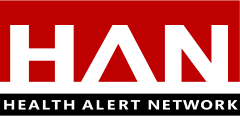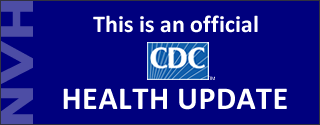Update for Clinicians on Testing and Treatment for Monkeypox
Distributed via the CDC Health Alert Network
July 28, 2022, 9:00 PM ET
CDCHAN-00471
Summary
As of July 28, 2022, the Centers for Disease Control and Prevention (CDC) and state and local public health partners are reporting 4,907 cases of monkeypox in the United States across 46 states, Washington, D.C., and Puerto Rico. CDC is also tracking multiple clusters of monkeypox that have been reported globally, including in 71 countries that normally do not report monkeypox.
This Health Alert Network (HAN) Health Update serves to alert clinicians on commercial testing capability, collecting clinical specimens for testing, and using TPOXX® (tecovirimat) for treating monkeypox.
Background
Since May 2022, CDC has been urging healthcare providers in the United States to be on alert for patients who have rash illnesses consistent with monkeypox. Distinguishing features of the rash include papules, vesicles, pustules, or scabs that are deep-seated, firm or rubbery, and have well-defined round borders. Vesicular or pustular stages of the lesions are often umbilicated (i.e., have a dent in the middle of them). They may be painful, painless, or itchy. People with monkeypox may develop symptoms including fever, headache, muscle aches, exhaustion or swollen lymph nodes during the prodromal period preceding the rash or with the rash.
Recommendations for Healthcare Providers on Diagnostic Testing
The public health response to monkeypox depends on timely and comprehensive laboratory testing and reporting of those results. Tests should be performed on persons for whom monkeypox is suspected based on clinical presentation and epidemiologic criteria. Positive diagnostic results from testing of skin lesion material for Orthopoxvirus or Monkeypox virus DNA in persons without epidemiologic criteria or known risk factors should be verified through repeat testing and/or confirmatory testing.
If there are no identified epidemiologic risk criteria for monkeypox infection, other possible causes of rash in adults should be considered, including secondary syphilis, herpes, and varicella zoster. In children without identified epidemiologic risk criteria for monkeypox, varicella zoster and molluscum contagiosum (MC) should be considered in the differential diagnosis. MC is an infection caused by a poxvirus (molluscum contagiosum virus) that is diagnosed more often in children than in adults. MC infection is usually a benign, mild skin disease characterized by lesions that may appear anywhere on the body. CDC’s FDA-cleared non-variola virus test used within the Laboratory Response Network laboratories and most commercial laboratories, does not cross-react with molluscum contagiosum virus. In children and adolescents, as in adults, other potential etiologies of illness should be tested for in parallel with or before Monkeypox virus testing, based on clinical presentation and epidemiologic criteria.
Specimen Type and Collection
- The recommended specimen type is material collected from the surface of a lesion or crust from a healing lesion. CDC recommends that three lesions per patient be swabbed. Swab the surface of the lesion vigorously to collect adequate DNA. It is not necessary to de-roof or lance the lesion before swabbing. For some individuals, the lesions may not be overtly visible (such as within the oral cavity or within the rectum), therefore clinicians should perform a thorough evaluation including a full body skin, oral, genital, and rectal examination to identify appropriate lesions for sampling.
- Different laboratories may vary in their specimen preparation requirements. Please contact the appropriate public health department or commercial laboratory to determine acceptable specimens.
Specimen Shipment
Specimen collection, storage, and shipping of human specimens is subject to the Clinical Laboratory Improvements Amendment (CLIA) restrictions.
- The clinician or facility collecting a specimen for laboratory testing should confirm collection, storage, and shipment instructions with the specific laboratory to which it will be submitted prior to specimen collection. Specimens should be shipped as Category B.
Reporting of Test Results
Any laboratory that performs diagnostic testing for Orthopoxvirus, non-variola Orthopoxvirus, or Monkeypox virus should report test results (positive, negative, equivocal) to state, tribal, local, or territorial health departments. The results should be reported to the health department in the patient’s jurisdiction of residence within 24 hours of testing. These data will inform prevention measures, contribute to the understanding of this outbreak, and can assist in predicting increases in testing demand and planning for potential supply chain issues for reagents and other test materials.
Orthopoxvirus Results Interpretation
Once results are received from the laboratory, a positive Orthopoxvirus test is considered to meet the case definition for probable Monkeypox virus infection since there are no other circulating Orthopoxviruses within the United States that cause systemic disease. Clinical care and prevention precautions should begin based on the Orthopoxvirus test result and should not wait for any additional viral characterization testing that may be performed.
Testing Capacity and Costs
To build upon CDC’s and the Laboratory Response Network’s testing capacity, CDC recently worked to bring testing online at five commercial laboratory companies. All five commercial laboratories are now online and, combined with the CDC’s Laboratory Response Network, have increased national Monkeypox virus testing capacity from 6,000 to up to 80,000 specimens per week.† It is not necessary to first consult with state or federal health officials prior to initiating diagnostic testing.
Information for Healthcare Providers on Tecovirimat Treatment
Tecovirimat (also known as TPOXX or ST-246) is approved by the Food and Drug Administration (FDA) for treating human smallpox disease caused by Variola virus in adults and children. Its use for other Orthopoxvirus infections, including monkeypox, is not approved by the FDA. However, CDC has an expanded access Investigational New Drug application (EA-IND) to allow access to and use of TPOXX to treat monkeypox in adults and children of all ages.
The EA-IND provides an umbrella regulatory coverage so that clinicians and facilities do not need to request and obtain their own INDs. The EA-IND also provides liability protection under the PREP Act for healthcare providers prescribing, administering, or dispending the drug, and ability for patients to seek compensation if they are seriously injured by the medication through the Countermeasures Injury Compensation Program (CICP). In the largest safety study of 359 healthy adult volunteers, other than local site reactions the most common adverse reactions among those receiving tecovirimat were headache (12%) and nausea (5%) [LABEL (fda.gov)]. The safety of tecovirimat has not yet been studied in people with Orthopoxvirus disease.
How to Obtain Tecovirimat (TPOXX)
- TPOXX is available through the Strategic National Stockpile, and multiple state and territorial health departments are pre-positioning supplies of TPOXX within their jurisdictions. All clinicians and care facility pharmacists requesting TPOXX should contact their state/territorial health department.
- For urgent clinical situations after hours, providers may contact CDC’s Emergency Operations Center (770-488-7100) to discuss the case with a clinician but pre-positioned TPOXX may be the fastest route to obtain the therapeutic.
- Treatment with TPOXX can begin upon receiving the medication and after obtaining informed consent. No pre-registration is required for clinicians or facilities to begin treatment.
- Forms requested under the EA-IND can all be returned to CDC after treatment begins.
TPOXX Expanded Access Investigational New Drug Protocol (IND 116,039/Protocol 6402)
CDC, in partnership with FDA, has made it easier for healthcare providers to provide tecovirimat (TPOXX) treatment to patients with monkeypox under the EA-IND protocol. The streamlined process reduces the number of required patient treatment forms from six (21 pages) to two (7 pages); decreases patient visits to three visits that can all be conducted via telemedicine; and makes collecting blood, lesion samples, and lesion photos optional.
Healthcare providers should perform the following:
- Obtain informed consent prior to treatment.
- Conduct a baseline assessment and complete the Patient Intake Form. If feasible, give the patient the diary form to complete at home and encourage the patient to return it directly to CDC. The top of the diary form provides the patient with instructions on how to return it to CDC.
- Sign the FDA Form 1572. One signed 1572 form per facility suffices for all (including future) TPOXX treatments administered under the EA-IND at the same facility.
- Document progress during and after treatment on the Clinical Outcome Form.
- Report life-threatening or serious adverse events associated with TPOXX by completing a PDF MedWatch Form [226KB, 3 pages] and returning it to CDC via email (regaffairs@cdc.gov) or uploading to ShareFile within 72 hours of awareness or sooner, if possible.
- Comply with FDA requirements for IRB review described here: Information for Healthcare Providers on Obtaining and Using TPOXX (Tecovirimat) for Treatment of Monkeypox | Monkeypox | Poxvirus | CDC.
It is important to note that clinicians can start the patient’s treatment upon obtaining informed consent. All forms can be completed and submitted after treatment initiation to facilitate timely care of the patient. Timely return of patient intake and clinical outcome forms by providers and healthcare facilities enables CDC to monitor clinically appropriate and safe use of TPOXX.
For More Information
- Considerations for Monkeypox Vaccination | Monkeypox | Poxvirus | CDC
- How to Report Test Results
- Preparation and Collection of Specimens
- Obtaining and Using TPOXX (Tecovirimat)
- Treatment Information for Healthcare Professionals | Monkeypox | Poxvirus | CDC
- Visit CDC-INFO or call CDC-INFO at 1-800-232-4636
- CDC 24/7 Emergency Operations Center (EOC) 770-488-7100
Footnote
†Testing at public health laboratories remains free. Commercial laboratory companies will bill private insurance, Medicaid or Medicare for all testing performed. Those who are underinsured or uninsured will receive a bill for that testing. The Administration continues to work to identify funding that would cover the cost of monkeypox testing regardless of the individual’s coverage. Clinicians may find the relevant CPT code for Monkeypox virus testing on each commercial laboratory’s website.
The Centers for Disease Control and Prevention (CDC) protects people’s health and safety by preventing and controlling diseases and injuries; enhances health decisions by providing credible information on critical health issues; and promotes healthy living through strong partnerships with local, national and international organizations.
Department of Health and Human Services
HAN Message Types
- Health Alert: Conveys the highest level of importance; warrants immediate action or attention.
- Health Advisory: Provides important information for a specific incident or situation; may not require immediate action.
- Health Update: Provides updated information regarding an incident or situation; unlikely to require immediate action.
- Info Service: Provides general information that is not necessarily considered to be of an emergent nature.
###
This message was distributed to state and local health officers, state and local epidemiologists, state and local laboratory directors, public information officers, HAN coordinators, and clinician organizations.
###

